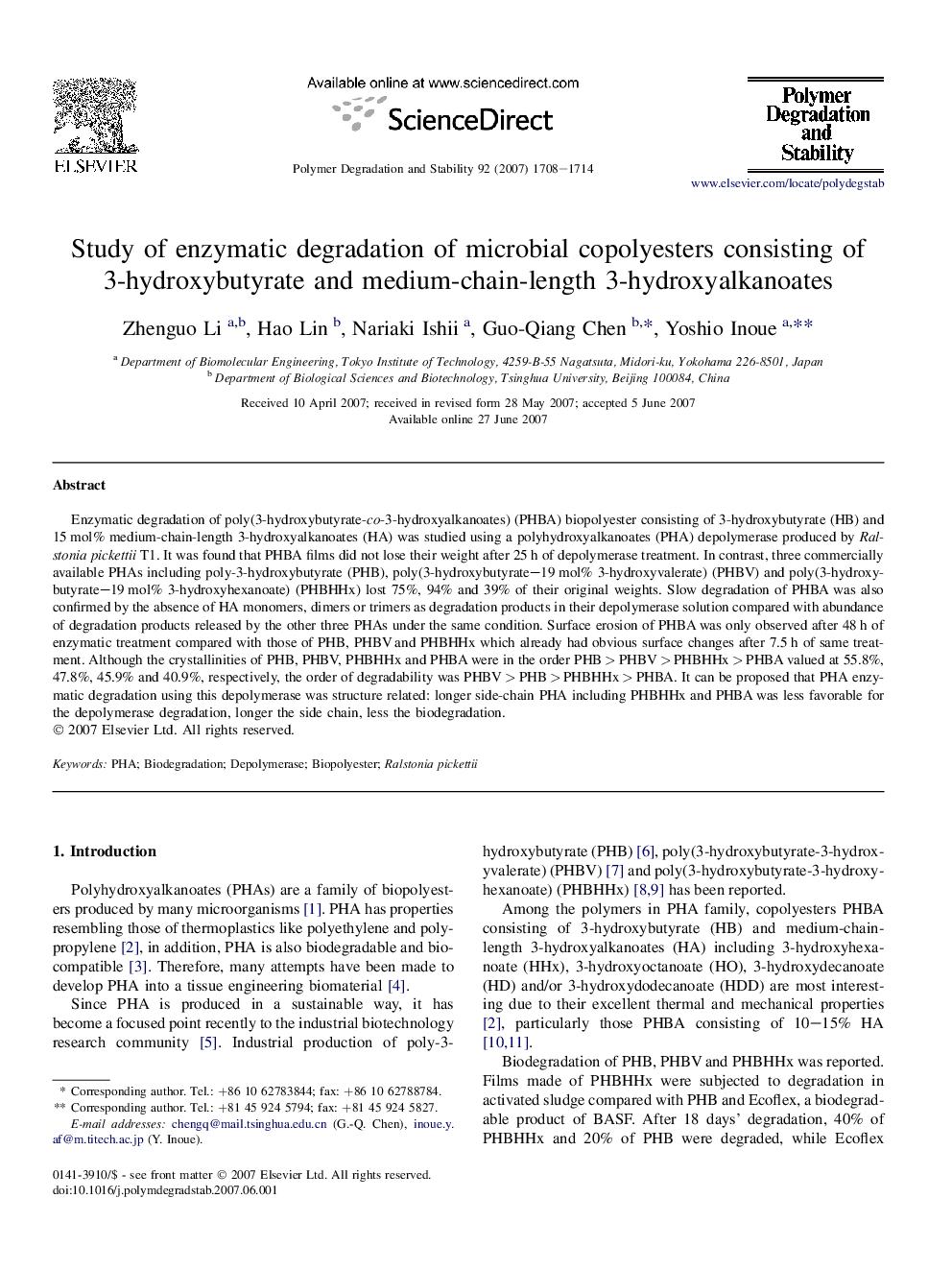| Article ID | Journal | Published Year | Pages | File Type |
|---|---|---|---|---|
| 5204997 | Polymer Degradation and Stability | 2007 | 7 Pages |
Abstract
Enzymatic degradation of poly(3-hydroxybutyrate-co-3-hydroxyalkanoates) (PHBA) biopolyester consisting of 3-hydroxybutyrate (HB) and 15 mol% medium-chain-length 3-hydroxyalkanoates (HA) was studied using a polyhydroxyalkanoates (PHA) depolymerase produced by Ralstonia pickettii T1. It was found that PHBA films did not lose their weight after 25 h of depolymerase treatment. In contrast, three commercially available PHAs including poly-3-hydroxybutyrate (PHB), poly(3-hydroxybutyrate-19 mol% 3-hydroxyvalerate) (PHBV) and poly(3-hydroxybutyrate-19 mol% 3-hydroxyhexanoate) (PHBHHx) lost 75%, 94% and 39% of their original weights. Slow degradation of PHBA was also confirmed by the absence of HA monomers, dimers or trimers as degradation products in their depolymerase solution compared with abundance of degradation products released by the other three PHAs under the same condition. Surface erosion of PHBA was only observed after 48 h of enzymatic treatment compared with those of PHB, PHBV and PHBHHx which already had obvious surface changes after 7.5 h of same treatment. Although the crystallinities of PHB, PHBV, PHBHHx and PHBA were in the order PHB > PHBV > PHBHHx > PHBA valued at 55.8%, 47.8%, 45.9% and 40.9%, respectively, the order of degradability was PHBV > PHB > PHBHHx > PHBA. It can be proposed that PHA enzymatic degradation using this depolymerase was structure related: longer side-chain PHA including PHBHHx and PHBA was less favorable for the depolymerase degradation, longer the side chain, less the biodegradation.
Related Topics
Physical Sciences and Engineering
Chemistry
Organic Chemistry
Authors
Zhenguo Li, Hao Lin, Nariaki Ishii, Guo-Qiang Chen, Yoshio Inoue,
